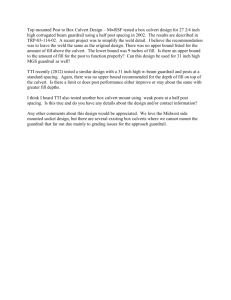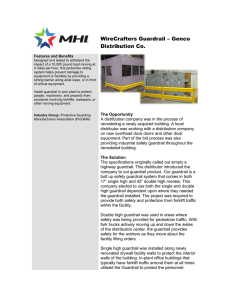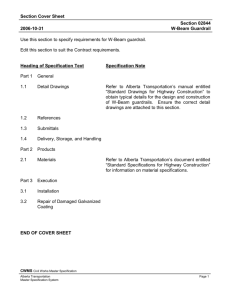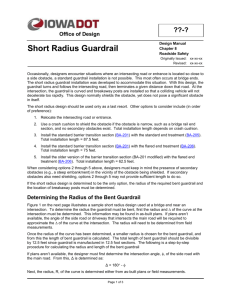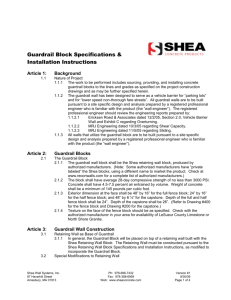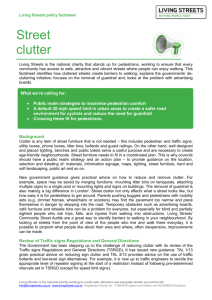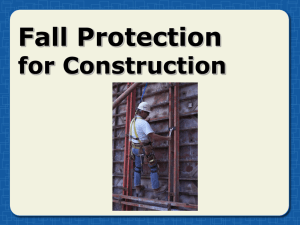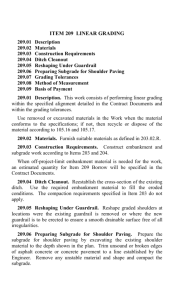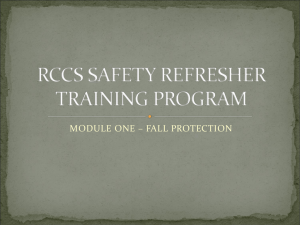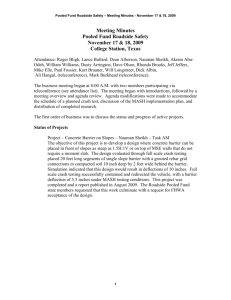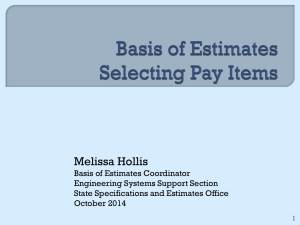Policy
advertisement
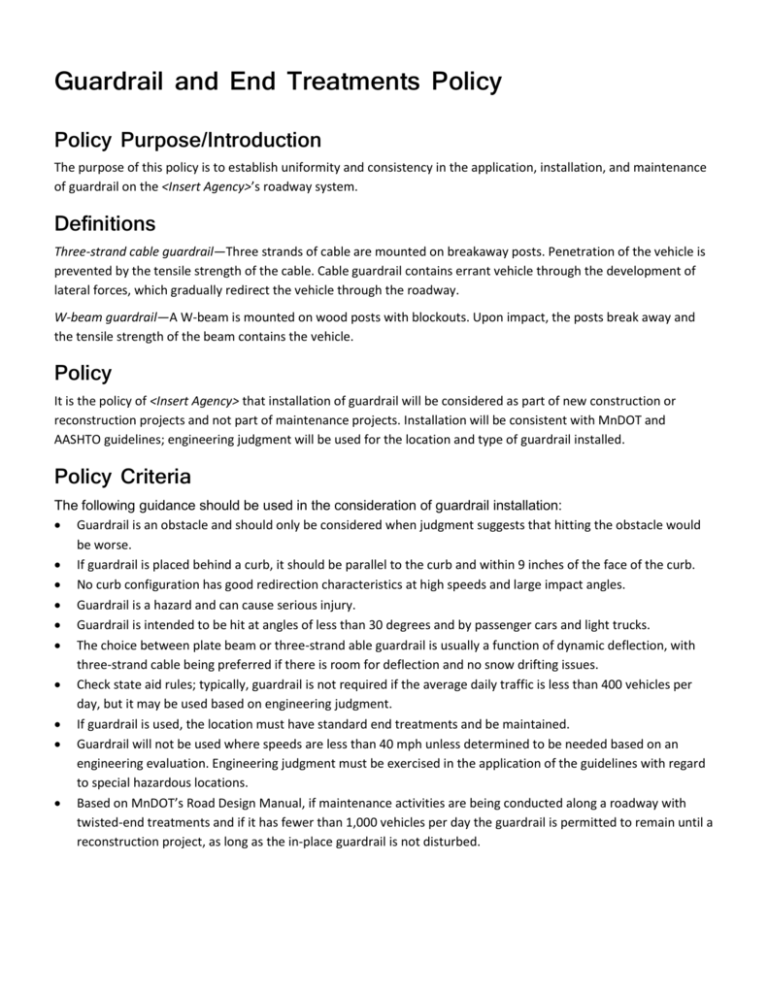
Guardrail and End Treatments Policy Policy Purpose/Introduction The purpose of this policy is to establish uniformity and consistency in the application, installation, and maintenance of guardrail on the <Insert Agency>’s roadway system. Definitions Three-strand cable guardrail—Three strands of cable are mounted on breakaway posts. Penetration of the vehicle is prevented by the tensile strength of the cable. Cable guardrail contains errant vehicle through the development of lateral forces, which gradually redirect the vehicle through the roadway. W-beam guardrail—A W-beam is mounted on wood posts with blockouts. Upon impact, the posts break away and the tensile strength of the beam contains the vehicle. Policy It is the policy of <Insert Agency> that installation of guardrail will be considered as part of new construction or reconstruction projects and not part of maintenance projects. Installation will be consistent with MnDOT and AASHTO guidelines; engineering judgment will be used for the location and type of guardrail installed. Policy Criteria The following guidance should be used in the consideration of guardrail installation: Guardrail is an obstacle and should only be considered when judgment suggests that hitting the obstacle would be worse. If guardrail is placed behind a curb, it should be parallel to the curb and within 9 inches of the face of the curb. No curb configuration has good redirection characteristics at high speeds and large impact angles. Guardrail is a hazard and can cause serious injury. Guardrail is intended to be hit at angles of less than 30 degrees and by passenger cars and light trucks. The choice between plate beam or three-strand able guardrail is usually a function of dynamic deflection, with three-strand cable being preferred if there is room for deflection and no snow drifting issues. Check state aid rules; typically, guardrail is not required if the average daily traffic is less than 400 vehicles per day, but it may be used based on engineering judgment. If guardrail is used, the location must have standard end treatments and be maintained. Guardrail will not be used where speeds are less than 40 mph unless determined to be needed based on an engineering evaluation. Engineering judgment must be exercised in the application of the guidelines with regard to special hazardous locations. Based on MnDOT’s Road Design Manual, if maintenance activities are being conducted along a roadway with twisted-end treatments and if it has fewer than 1,000 vehicles per day the guardrail is permitted to remain until a reconstruction project, as long as the in-place guardrail is not disturbed. Financial Considerations All guardrail is to be maintained. The amount of guardrail on <Insert Agency>’s system should match the available funding for maintaining the guardrail. If funding is not available for maintenance, a review of existing guardrail and potential removal of guardrail should be considered based on engineering judgment.
